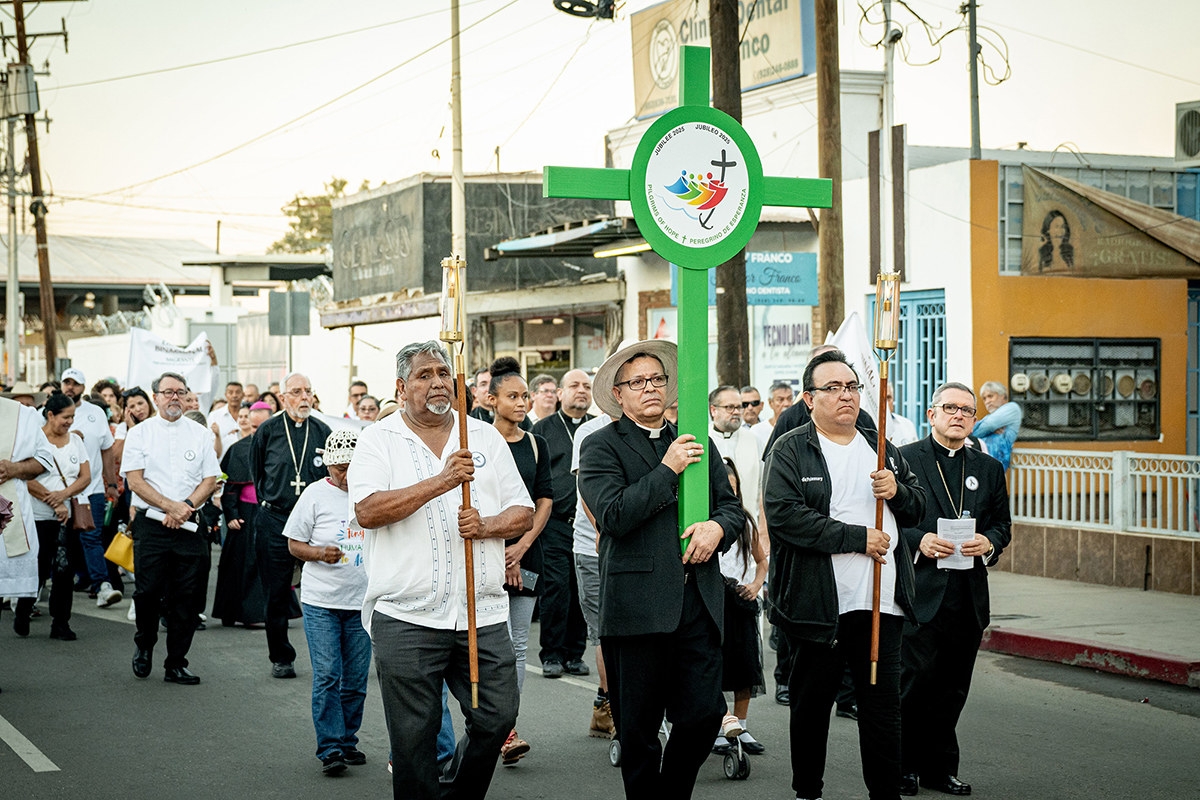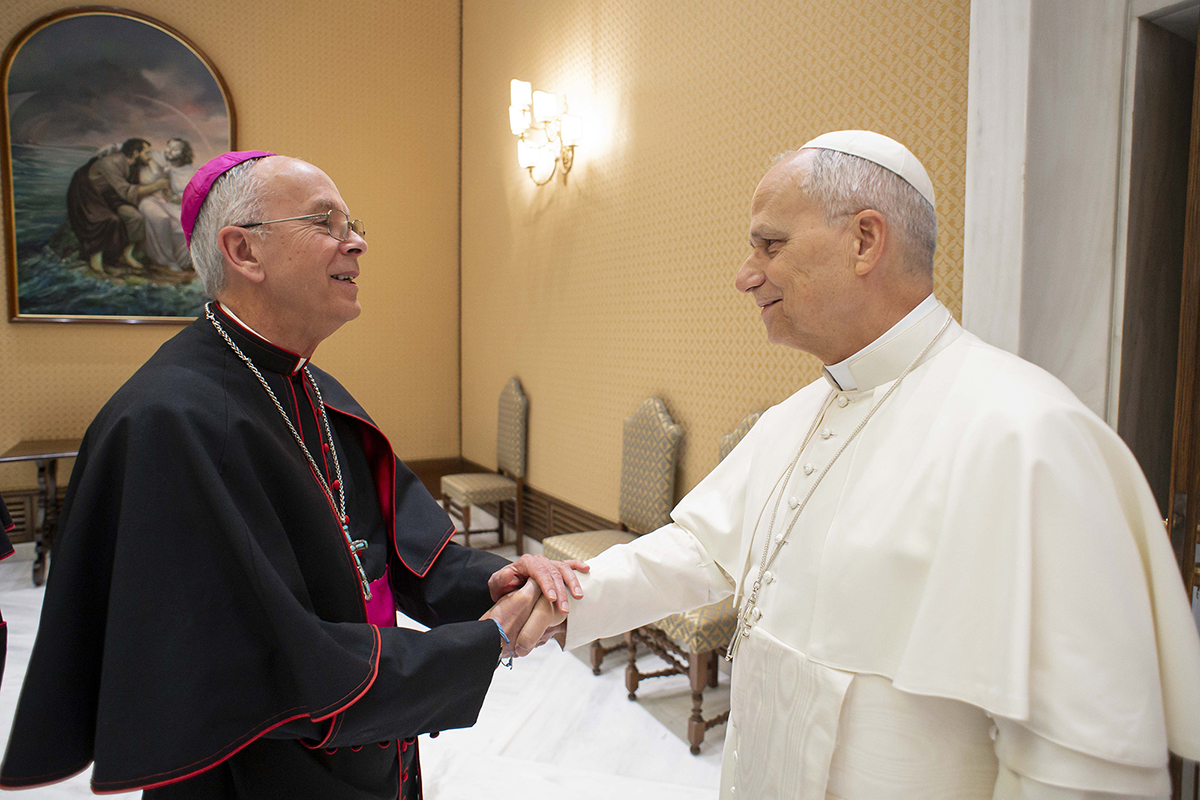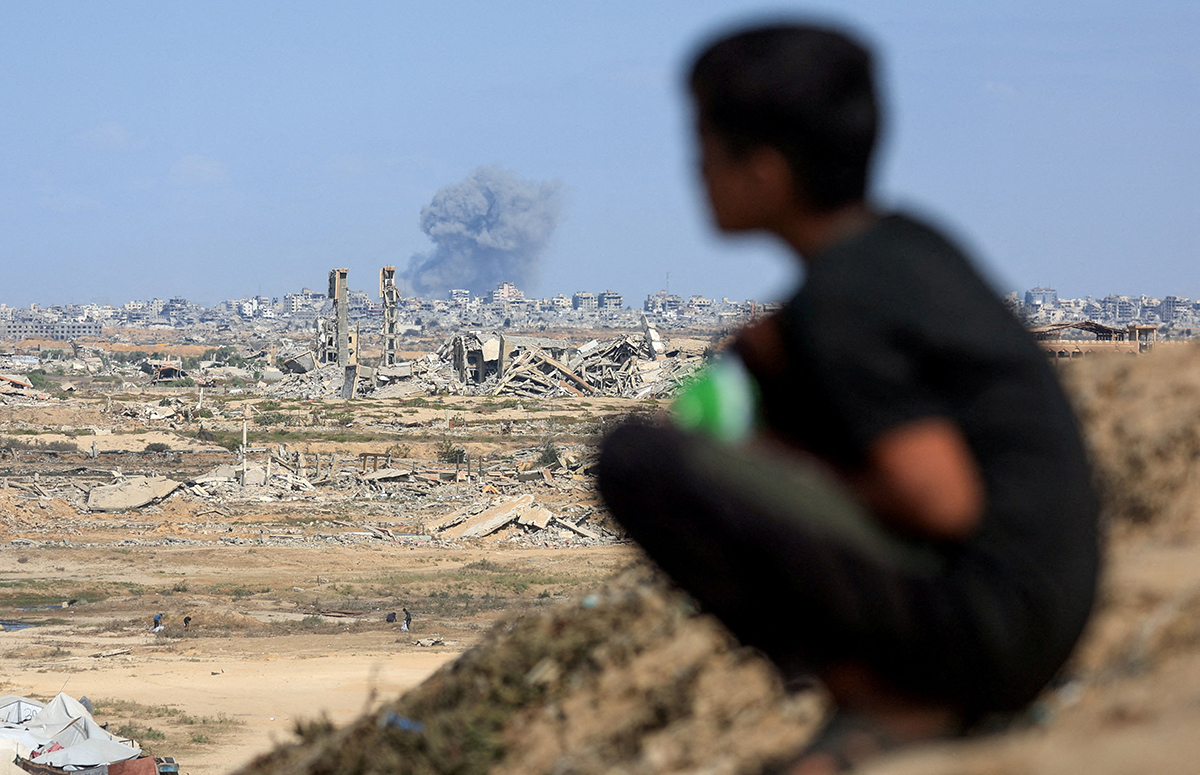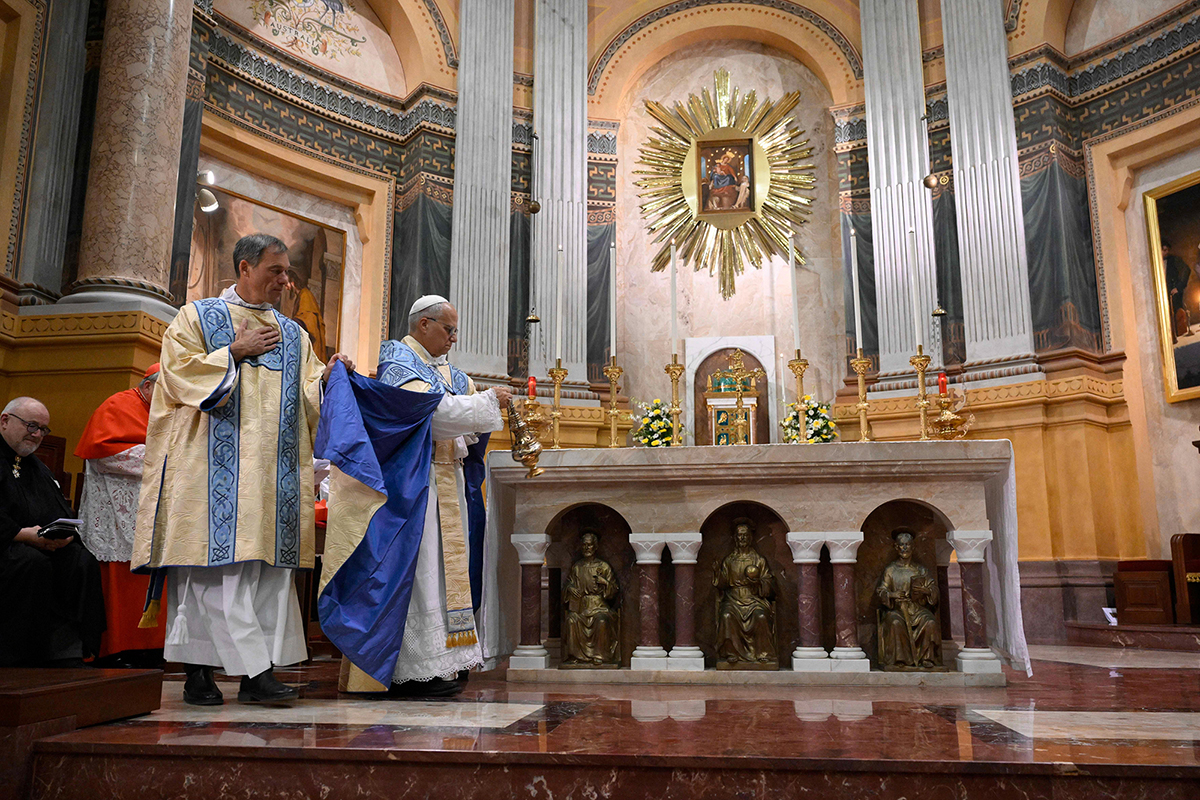Pope: Peace process ‘a spark of hope in the Holy Land’
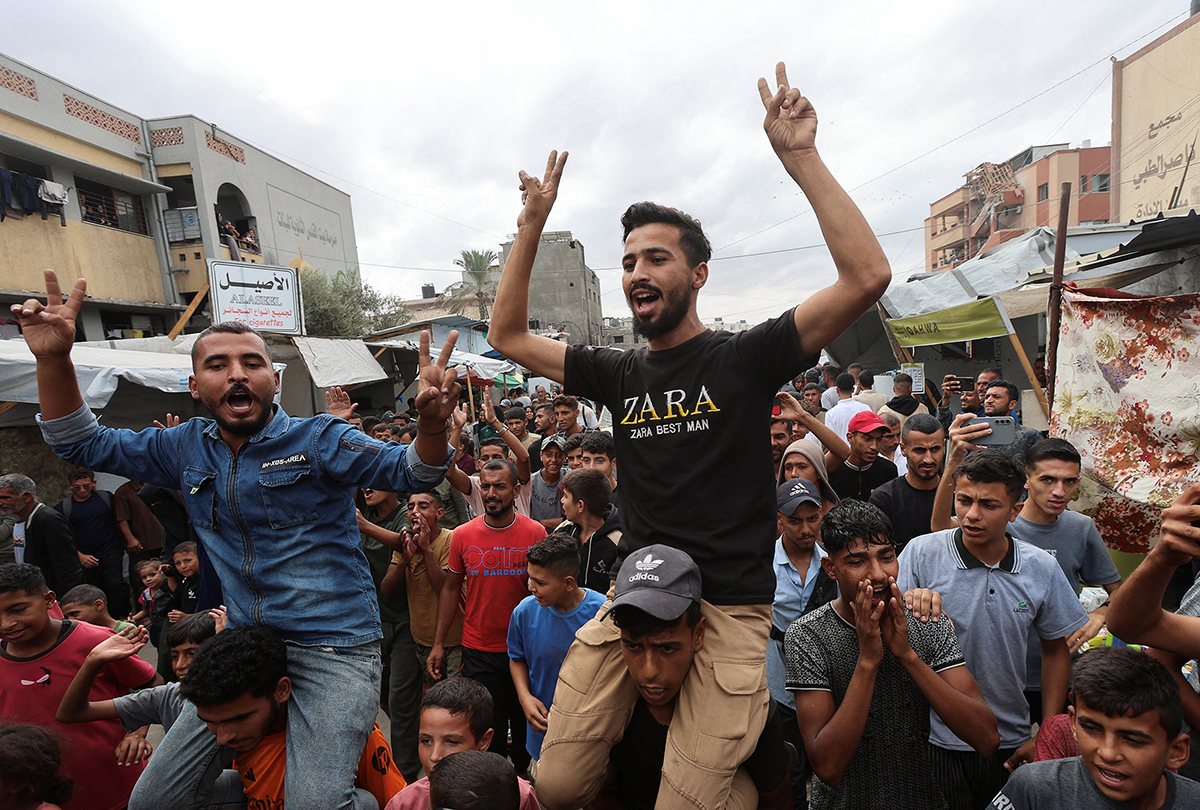
Pope Leo said to ensure lasting peace beyond ceasefire, Palestinians and Israelis must see each other as brothers, sisters
VATICAN CITY — With the start of the first phase of a peace deal between Israel and Gaza, Pope Leo XIV prayed for a just and lasting peace that respects all people.
“We ask God, who is the true peace of humanity, to heal all wounds and to help us with His grace to accomplish what now seems humanly impossible: to remember that the other is not an enemy, but a brother or sister to be seen, forgiven and offered the hope of reconciliation,” he said Oct. 12.
Before praying the Angelus after Mass in St. Peter’s Square as part of the Jubilee of Marian Spirituality, the pope highlighted the new peace deal, saying “the agreement to begin the peace process has given a spark of hope in the Holy Land.”
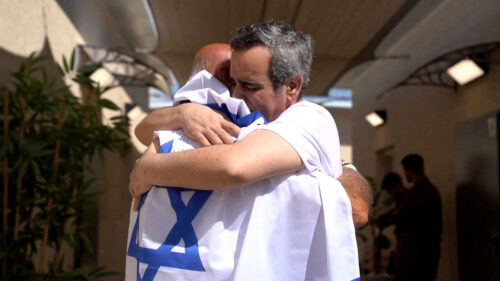
Released Israeli hostage, Omri Miran, held in Gaza since the deadly Oct. 7, 2023 attack by Hamas, embraced his father, Dani Miran, after his release as part of a prisoner-hostage swap and a ceasefire deal between Israel and Hamas, in Reim, Israel, Oct. 13.
Led by U.S. President Donald J. Trump, the first phase of the agreement was approved by Israel and Hamas. The plan includes a ceasefire, the exchange of hostages and prisoners and humanitarian aid for Gaza.
The Israeli military said it began the ceasefire in the Palestinian territory Oct. 10 and is withdrawing from parts of the Gaza Strip. There are expected to be more negotiations to handle the details of the next phases of the peace deal.
Pope Leo said, “I encourage the parties involved to continue courageously on the path they have chosen, toward a just and lasting peace that respects the legitimate aspirations of the Israeli and Palestinian peoples.”
“Two years of conflict have caused death and destruction throughout the land, especially in the hearts of those who have brutally lost their children, parents, friends and possessions,” he said. “With the entire Church, I am close to your immense pain.”
Sense of relief, but peace vulnerable
Scenes of joy, relief and tearful welcomes flooded media across the world Oct. 13 as the remaining Israeli hostages were freed from Hamas captivity in the Gaza Strip as part of the U.S.-brokered ceasefire agreement.
As part of the U.S.-proposed deal, 250 Palestinian prisoners also were released by Israel, with 1,650 more to be freed.
On Oct. 13, Joseph Hazboun of the Catholic Near East Welfare Association-Pontifical Mission said that with the deal reached, he was “very happy at long last” but “not optimistic enough to say” it’s “a peace agreement” but “a ceasefire.”
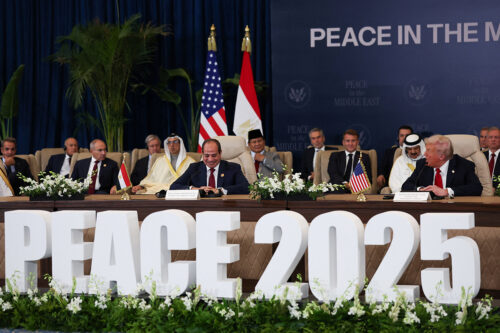
U.S. President Donald Trump and Egypt’s President Abdel Fattah al-Sisi attended a world leaders’ summit in Sharm el-Sheikh, Egypt, Oct. 13 on ending the Gaza war, amid a U.S.-brokered prisoner-hostage swap and ceasefire deal between Israel and Hamas.
“This is the day that we’ve been waiting for for two years,” said Hazboun, regional director for CNEWA-Pontifical Mission’s Jerusalem office.
“The people that were ordered to evacuate and move all around the Gaza Strip for several times are finally going back to their … areas of residency,” he said. “I’m not sure what they will find there — probably the ruins of their homes, but at least they will be safe. There is no more bombing from air or from the sea or from the land.”
Hazboun said that Trump “deserves the credit for putting an end to the war” as he “basically informed Netanyahu he has to stop. And now Trump is the guarantor of the end of the war.”
He also warned that with earlier attempts to stop the war, the parties “on several occasions shifted position for whatever reason,” therefore in the Holy Land, “we have our hands on our heart praying that this agreement will last.”
Starting to rebuild
Now, Hazboun said, all eyes are on Gaza, where tens of thousands began to make their way back to their homes, or what’s left of them.
Many Palestinians returned to see only mostly rubble left. Father Gabriel Romanelli, the pastor of Gaza City’s Catholic parish, said the entire enclave has experienced a “tsunami” of destruction. The Holy Family Parish and St. Porphyrios Greek Orthodox Church compound has been sheltering many of Gaza’s Christians.
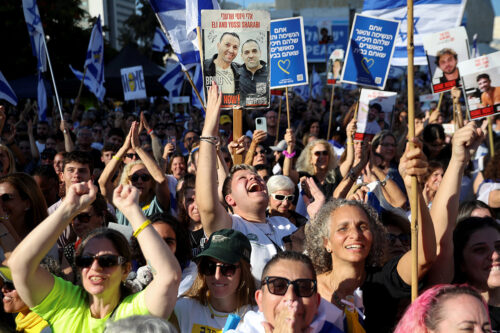
People gathered at “Hostages Square” in Tel Aviv, Israel, Oct. 3 on the day Hamas released hostages, who have been held in the Gaza Strip since the deadly Oct. 7, 2023, attack by Hamas.
Hazboun said that “people will have the freedom now to go and check on their homes,” but “it will take time” to see “who has his home or his apartment intact and can move back, who has minor destruction, who has full destruction.”
What gives people a sense of relief is that “there is no more bombing around them,” he continued, but at the same time “there is no infrastructure, there is no electricity, there is no water, there is no sewage” and “life is going to be complicated for the coming period.”
Hazboun said CNEWA staff was given instructions “to start asking, inquiring about what are the immediate needs as far as maybe not food, but maybe water, probably medicine, medical aid, medical supplies — all remains to be seen.”
He predicted that “we will witness an exodus from Gaza for the Muslims and for the Christians” and that for Christians it will be “more catastrophic because of the few, the little number of the Christian community that has remained in Gaza. So every person that leaves is a great loss.”
As hundreds of aid trucks were allowed to reach Gaza starting in the early morning hours of Oct. 12, in a hopeful sign “prices have dropped enormously,” Hazboun said, pointing out that the price of flour dropped to $2-4 from $25 per kilogram (2.2 pounds).
Asked how Catholics across the world can help, Hazboun said first of all, with prayers “that this truce, this ceasefire, will hold and move forward towards a permanent peace agreement where Gaza will have the opportunity to flourish.”
He said that amid a sea of destruction, “bringing in all the materials that the strip requires without limitations” is crucial.
“They say they require two to three years to remove the debris. The hundreds, thousands of tons of destroyed material … but it all depends on the will of the people in power,” Hazboun said. “And I hope that President Trump,” along with leaders participating in signing of the peace agreement in Egypt, “will really exert pressure to move forward, as well as provide funding and find the right mechanism to help the people regain their dignity and find a suitable and decent place to live in.”
In Egypt, Trump touts ‘phase 2’ of ceasefire deal
Trump said during a meeting in Egypt on Oct. 13 that “phase two has started” of a peace deal between Israel and Hamas in response to a question from a reporter about when the next stage of negotiations would begin.
Earlier the same day, Trump said it was the “dawn of a new Middle East” in remarks before the Israeli parliament Oct. 13 after Hamas freed what are believed to be all of its living hostages and as Israel released Palestinian prisoners in a preliminary agreement on the White House’s ceasefire deal.
“This is not only the end of the war, this is the end of an age of terror and death, and the beginning of the age of faith, of hope and of God,” Trump told Israel’s Knesset.
The remains of some of the deceased hostages were transferred to the custody of the Red Cross. Hamas released just four of the deceased, prompting some anger from advocates of the hostages’ families and concern about Hamas following through on their commitment to do so.
During his remarks, Trump said, “This long and difficult war has now ended,” although many details of a long-term plan remain subject to negotiation.
At the summit, Trump, el-Sisi, Turkish President Recep Tayyip Erdogan and Qatari Emir Tamim bin Hamad Al Thani formally signed the Gaza ceasefire agreement, as other world leaders, including British Prime Minister Keir Starmer and French President Emannual Macron, looked on.
Some of the details of that agreement were still unclear Oct. 13.
Pope Leo said to ensure lasting peace beyond ceasefire, Palestinians and Israelis must see each other as brothers, sisters
Subscribe to Read All St. Louis Review Stories
All readers receive 5 stories to read free per month. After that, readers will need to be logged in.
If you are currently receive the St. Louis Review at your home or office, please send your name and address (and subscriber id if you know it) to subscriptions@stlouisreview.com to get your login information.
If you are not currently a subscriber to the St. Louis Review, please contact subscriptions@stlouisreview.com for information on how to subscribe.

